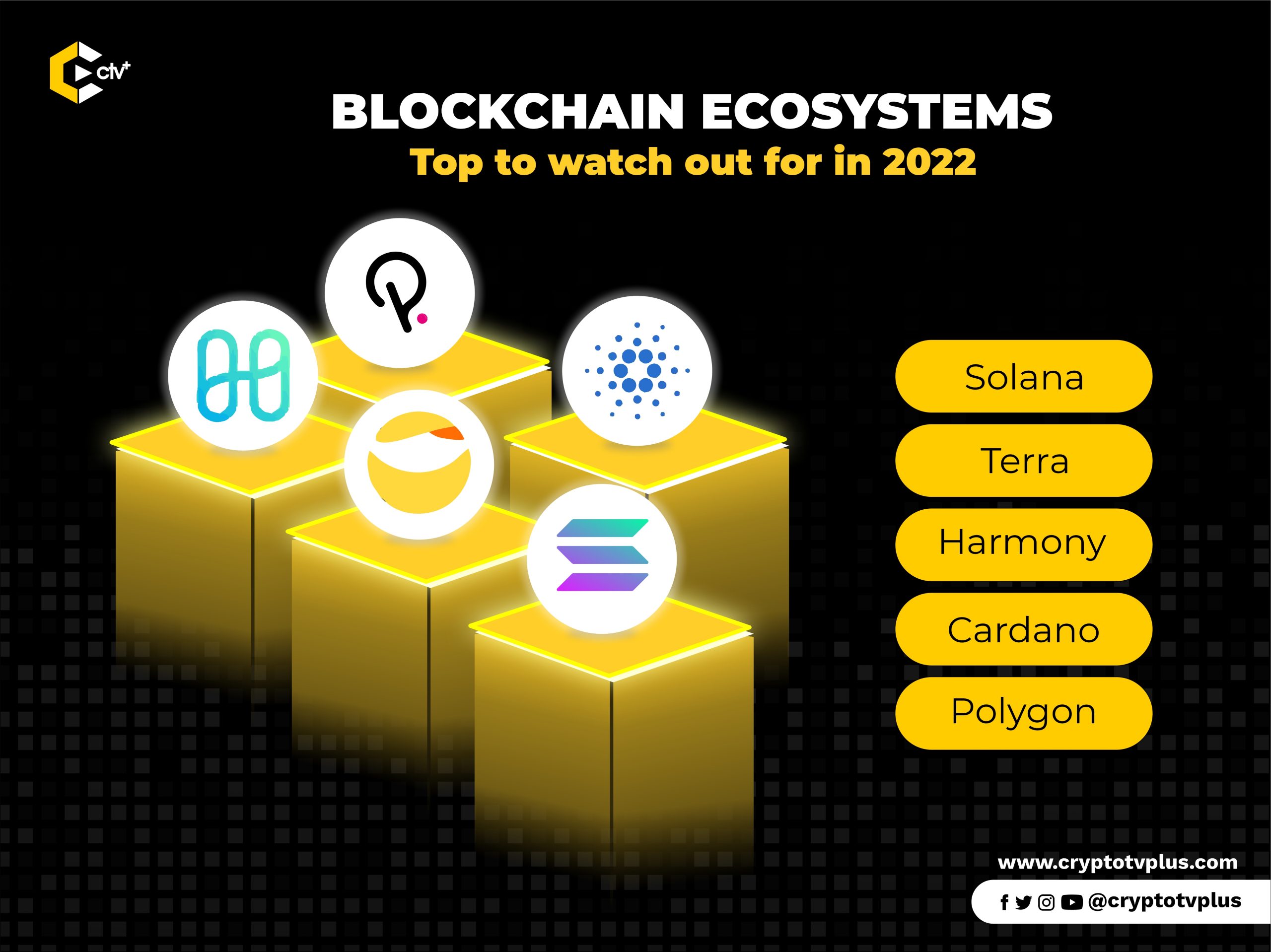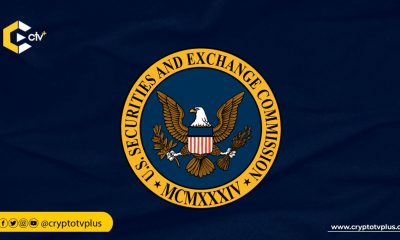FEATURED
Top Blockchain Ecosystem to watch out for in 2022

Blockchain Technology and its applications have revolutionized the systemic approach in many regards. Blockchain networks within their ecosystem have fashioned their value output to solve the problems of traditional systems of operation with decentralized solutions.
2021 has been a hot one for Blockchain-based innovations, with NFTs and GameFi; play-to-earn on top of the list, among other decentralized innovative craft. 2022 will unfold more innovative applications.
To keep abreast of the market here are 5 Blockchain Ecosystems to watch come 2022.
SOLANA
Solana is a Proof of Stake (PoS) decentralized blockchain built to accommodate developers and everyday users. Solana runs an open application censorship-resistant mechanism and offers project composability. The idea of a composable project, aids in keeping up a single global state which deals with fragmented layer 2 systems.
Blockchain is often faced with the challenge of scalability and network gas fees. As a network grows limitations as regards transaction speed and validation time could become a major challenge.
The Solana ecosystem adopts the Proof of History as their key feature to solve this problem. The network handles 1000+ transactions per second and minimal gas fees.
Users pay their transaction fees with SOL, the network utility currency. SOL has two main uses cases:
- Paying for transaction gas fees
- Staking of Proof of Stake Consensus mechanism
Solana has over 325+ projects launched and built on their blockchain protocol, including play-to-earn games. SOL is tradable on cryptocurrency exchange markets.
check out Solana market data here
HARMONY
Harmony is a Proof of Stake open Decentralized platform with fast Blockchain transaction finality. The Harmony Mainnet runs Ethereum applications on lesser time and subsidized fees.
The network developers launched with the motto “decentralized at scale.”
Harmony runs a cross-chain asset transfer with Ethereum, Binance, and 2 other chains. This makes it easier for users to connect Proof of Work and Proof of Stake chains. Developers have access to faster EVM executions using the protocol and can easily migrate to Harmony using standard Web3 tools.
Harmony aims at scalability by sharding network communication, transaction validation, and blockchain state. Running with a DRG process contributes to its Blockchain security and scalability.
$ONE is the native Currency of the Harmony network. It serves as a utility token for the platform and trades on the cryptocurrency market.
Harmony welcomes both developers and users to take part in their blockchain goodness to keep building innovative applications.
TERRA
Terra is an open Blockchain network built on Cosmos SDK and Tendermint. The network uses Delegated Proof of Stake (DPoS) consensus mechanism with the view to deploy Decentralized Stable coins and bring DeFi to the public.
Users can create Stable coins pegged to Fiat currency, these coins use the protocols’ Seigniorage mechanism.
Each Token minted on the Terra platform is known as Terra currency and it exists alongside LUNA implying that Terra and LUNA have a complementary relationship.
The Terra governance and utility token is $LUNA
Terra ecosystem has over 97 projects spanning Web3, NFTs, and DeFi.
Read also;
CARDANO
Cardano is a multi-purpose Proof of Stake Blockchain protocol founded on peer review and developed using evidence-based methods.
Cardano is the first Blockchain project to implement the Ouroboros protocol.
According to Cardano developers; security, scalability, and interoperability are the key features of the network. The Ouroboros protocol was implemented to achieve this.
The Cardano ecosystem is built as a third-generation Blockchain and has pushed out use cases across industries.
Products built by Cardano to tackle multiple industrial problems,
- Atala PRISM (IOHK)
- Atala SCAN (IOHK)
- Atala Trace (IOHK)
$Ada is the Cardano native Currency used to perform transactional operations in the network.
As a third-generation Blockchain, it aims to solve first-generation and second-generation problems. First-generation; Bitcoin and second-generation; Ethereum.
POLYGON
Polygon is a decentralized network for creating Ethereum compatible blockchain networks, and scaling Innovative solutions made possible by the ecosystem SDK; a parallel chain connected to another blockchain.
The Polygon network is fast and cost-effective compared to Ethereum. It is a Proof of Stake sidechain which offers higher transaction throughput and low fees.
The ecosystem supports two main types of Ethereum compatible networks
- Secured chain
- Stand Alone chains
DeFi DApps in their number are already deployed on the network and many play to earn games like the Trade Race Manager and Arc8 by GAMEE
The network token $MATIC is used for paying transaction fees and taking part in governance. A good way to earn MATIC just like most cryptocurrencies is staking; a passive earning method in cryptocurrency.
What do you think of this article? Share your comments below.

























Pingback: Top Blockchain Ecosystem to watch out for in 2022 by Ifeoma Joy Okorie – CryptoTvplus Events: NFT, DeFi, Bitcoin, Ethereum, Altcoin Events
Pingback: LUNAVERSE; a Convergence of 3D Real City Models & NFTs | CryptoTvplus: DeFi, NFT, Bitcoin, Ethereum Altcoin, Cryptocurrency & Blockchain News, Interviews, Research, Shows
Pingback: LUNAVERSE; a Convergence of 3D Real City Models & NFTs – Crypto Watch Daily
Pingback: Top Six (6) Project on HarmonyOne Blockchain | CryptoTvplus: DeFi, NFT, Bitcoin, Ethereum Altcoin, Cryptocurrency & Blockchain News, Interviews, Research, Shows